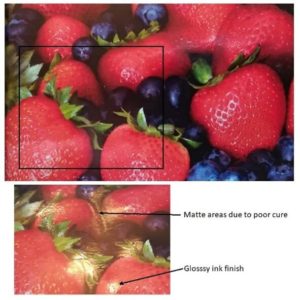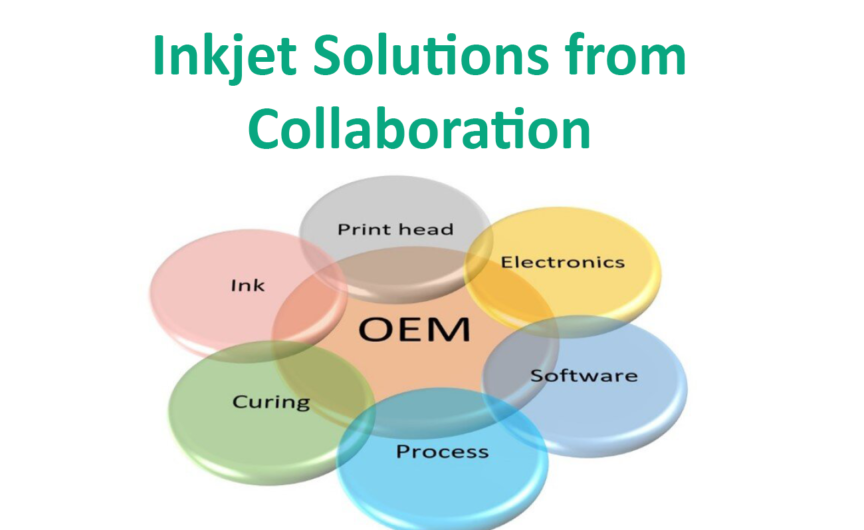In my recent post, Inkjet Labels Come of Age on the development of inkjet printers for labels, I took a look at the heads & inks that historically went into making the exceptional printers we see today. What was not so obvious from that account was just how much behind-the-scenes work came from the collaborative efforts of the people supplying the OEMs, including those in software and hardware. In this post, we discuss the importance of collaboration when it comes to industrial inkjet development.
Production print is dominated by the global print players, but in smaller and niche industrial segments there are a mixture of companies that develop inkjet printing machines and the components that go into making them work. Looking back at our labels example: when they embarked on developing label printers, Durst for example, had relatively little experience with single-pass having focussed initially on the wide-format market. Dotrix (Barco) and Caslon (FFEI) were both the product of small teams whose hard work gained the recognition of larger companies and the promise of the Jetrion 400 series saw EFI embark into single pass systems. All these systems made use of Xaar print head technology, specially formulated inks, and emerging UV-LED systems for pinning of the drops to meet the challenges of single pass onto different substrates.
It can be a bumpy ride for those early to the market. As Clive Ayling of Meteor Inkjet pointed out in our panel today on inkjet collaboration at the FuturePrint Virtual Summit panel, inkjet is an exciting area at the leading edge of many things, but “the leading edge can also be the bleeding edge”. This is a phrase that certainly rings true of my early experience in labels and corrugated printing and not all the product innovations out of the late 2000s survived the “chasm” as it has been called.

THE CORRUGATED CHASM & BEYOND, Mark Bale, InPrint Milan, Nov 2018
Forward-looking R&D effort takes some time to pay back but seemingly has proven worth the effort, as strong sales of their Durst’s RSC platform and other label printers shows. However, it is the often-hidden cooperation between suppliers of heads, ink and supporting equipment that has underpinned the ability of the independent OEMs to produce the best machines. As pointed out by Phil Jackman of Sun Chemical, “independently developing something makes no sense at all”. This is reinforced by Simon Roberts of Integration Technology, who says of inkjet systems “it’s almost like it has to be a well conducted orchestra to bring it all together to work in balance”.

A simple example comes from looking at a UV-cured label print sample from LabelExpo 2013, where the curing of the darkest areas of ink was not adequately optimised by understanding the interplay between photoinitiator selection (ink), ink coverage (software) and curing wavelength (UV system). Understanding the root cause and fixing these challenges are best achieved through mutual understanding between the OEM and the relevant suppliers. Such issues can be hidden by over-varnishing (OPV) or over-laminating, but will ultimately influence adhesion, or even worse for low migration applications, impact the compliance of the package.

The key, according to Richard Darling of Ricoh, is the suppliers “letting each other know what we are up to and try and involve each other in it”. That is truly what keeps the industrial inkjet market moving forward into new applications. Of course, this is also supported strongly by activities of consultants like DoDxAct and other contributors at Inkjet Insight who are constantly helping clients find the right solutions to meet their needs. For DoDxAct that often means demonstrating in our laboratory the combination of print head and ink and developing the “waveforms” that are critical to the performance of industrial solutions.
You can learn more about the importance of inkjet collaboration in the development of industrial inkjet solution during the FuturePrint Summit. Register to hear the replay of the session I led along with the above-mentioned suppliers of heads, inks, electronic and curing systems.

